#middle classic
Text
Twin Topils, or, The Little Ruler List that Could
To begin a long, gruelling series of posts, I find it fitting to provide some manner of context beforehand.
Tollan (Xikokotitlan) in general is a bit of a historical clusterfuck, its history plagued with hundreds of years of accumulated exaggeration and further hundreds of interpreted and reinterpreted, lost and word-of-mouth'd sources. So as with many things, the truth is that no history will be truly complete, not with the materials we have today, probably never.
But one can, with a little scrawling madly at 12am, a good pen and a blank page, get closer to something old and forgotten: who the hell ruled Tollan before its demise.
Our journey begins with a long account of the years as perceived in Kwawtitlan. So the text is called, uh, Annals of Kwawtitlan.
It presents us with appearances of various rulers of various places, walking through time at a pace of its Xiwpoalli years, occasionally calling back to older events, occasionally retelling poems and prose stanzas of things said to have happened.
Walking back and making note of names, we arrive at the following list for the rulers of Tollan:

It should be noted that this is indeed a wiki table, albeit with an odd offset of 52 years from the original. This is intentional, I'd gone and did the walk back sometime ago but never bothered to reflect it on the wiki page, simply noted it in a final parenthesis to its introductory line.
Whichever the case, making a list of just this one source would be... irresponsible at best. There are other sources, the most popular of which are Ixtlilxochitl's various lists, five texts he wrote over the course of his life. These are all differently-dated, but they serve us well in most cases:

Ixtlil lists entirely different names except for one, Wetsin, though his dates are rather more distant into the past, getting somewhat closer as he writes more and (presumably) gathers and moves around now-lost sources.
What's notable about his lists is that the first one, within the Historia de la Nación Chichimeca, ends with a certain Topiltsin that's preceded by an Istakkaltsin. As time goes on, he adds changes a few names: Tlakomiwa to Mitl, Istakkaltzin to Tekpankaltsin, Xiwsaltsin to Xiwtlaltsin, and adds an Ix- to the beginning of Tlilkuechawak. He also seems to have discovered a new ruler, Mekonetsin, who he initially thought to have been another name for Topiltzin. He was instead his son, whose mother was a certain Xochitl, who we suggest had participated in the civil war of their time and deposed Topiltsin, whereafter she ruled for an unspecified number of years, then their son after her passing. This table doesn't include her for some reason.
Notes and parallels abound, but for now we will turn to Chimalpain's rather short list of rulers: Wemak (993-1029) and Akxitl Topiltsin Ketsalkoatl (1029-1051). He merely lists, it appears, those closest to the people he wrote this about, in a certain Brief memory of the founding of the city of Colhuacan.
Chimalpain had made a few mistakes elsewhere, apparently shifting a few rulers to the period of the one who preceded them. Thus, tentatively, his list would need to be re-evaluated as pertaining to a few years later, at least 22.
Most other lists are rather close to the two first ones, but there is one with a curious divergence.
The Anónimo Mexicano lists the first five all the same (Chalchiwtlanetl, Ixtlilkwechawak, Wetsin, Totepew and Nakaxok, who here is mangled as Nakaskayotl), but it jumps straight to Mitl, entirely skipping Istakkaltsin and Mekonetl. After Mitl, the regular order seems to come back with Xiwtsalli, but then we learn she ruled for only four years, after which a regency council was installed.
We are not told for how long did such a situation exist, but we are informed that a certain Tekpankaltsin ruled after its dissolution, and that he was the very last monarch of the city.
There is little more that we can use for our reconstructions, but three more sources are pivotal in orienting us. Torquemada, in his Monarquía Indiana, presents to us the knowledge that Tekpankaltsin also bore the name "Topiltsin," while the Annals of Kwawtinchan (by another name, the Historia Tolteca-Chichimeca) inform us that the last ruler of Tollan was Wemak, he whose iron fist caused instability and who became subject of the second coup in the city's history, and that a certain Wewetsin lineage of Nonoalka-chichimekah had a quarter of the city after being one of a few primary chichimeka groups to move to the area. Finally, the Codex Xolotl provides note that Tollan had been completely abandoned by 1175, a date generally supported by archaeological findings at the city reported by Healan et al.

It would appear that some common sources were used here.
Firstly, the most primordial one.
Both the AnaKwaw and Ixtlilxochitl's final list have 9 rulers, a few of which appear to be variant readings of certain glyphs: Mitl ("arrow") may be an abbreviated glyphic form of Tlakomiwa (meaning "possessor of wooden arrows"), which in turn is Mixkoatl's signature representation:
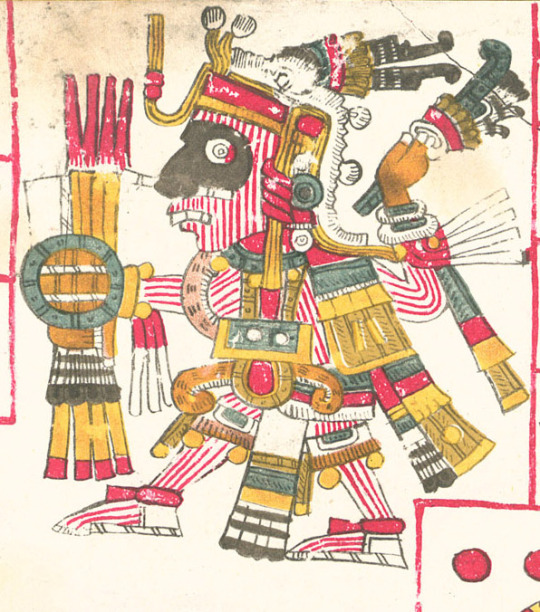
We could go on about the apparent snake around his right elbow resembling the convention for drawing masakoah, horned snakes, but this information is not entirely useful for us beyond "neat, might be whence the masatsin came from."
Also disclaimer bc ik this is actually from somewhere in the Puebla-Tlaxcala area: he hath the same traits in the Telleriano-Remensis. I just like this one a little more :)
Anyway, another name with a variant may be Xochitl, being merely "Xochitl" in Ixtlilxochitl (heh heh) and "Matlakxochitl" (10-flower, a calendarical name) in the AnaKwaw, where she directly succeeds Se Akatl.
Akxitl, meanwhile, may be a conjunct case of mangling, abbreviation and variant readings: it may very well be reconstructed as Ak[atl]-xitl, but the latter part is seldom used in names Just Like That. Instead, that may be a slight mangling of xiwitl, a word whose glyphic form is a turquoise circle, but which can be quite easily confused with the turquoise dots that make a number count when alone. Thus, a single blue dot and a reed may very well be read as Akaxiwitl, but also as Ce Akatl.
(Note: i didn't come up with all of this — the Se Akatl : Aka[tl]-xiwitl theory was proposed by a fellow scholar who goes by Jan online. Thx @261jan)
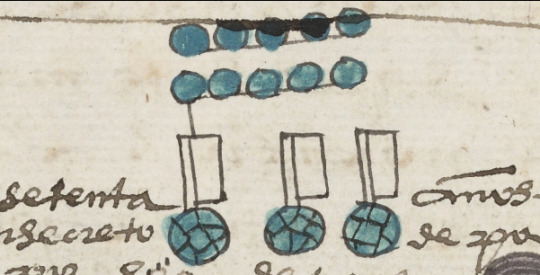
It may not have been a single ancestral source, but at least two or perhaps three (one went to AnaKwaw author(s), one to Anón. and Ixtlil, while Chimal may have an additional one that Ixtlil also consulted later on) that were involved, co-temporally produced and recording events that were basically the same, but with slightly differing glyph usage and timing.
It's easy to deduce a closer connection between Ixtlilxochitl, Chimalpain and the Anónimo, although then we'd need to take a closer look at who consulted who here.
The only one who tells us who he read outright is Chimal. Most of his' are primarily Chalko and particularly Amakemekan and Tenanko (such as the [seemingly] Título Primordial written by Rodrigo de Rosas Xohecatzin, his father-in-law), but there are a few that come to mind as likely candidates: his two "small and veritable books" — which, by the sound of them and the apparent lack of focus on lineage or years, may have been historical-cartographical works resembling the Xolotl and Huamantla codexes —, and two glossed genealogies.
He had two more written sources, a Xiuhtlapohualamoxtli (an annal) with an apparent exclusive focus on Amakemekan, and the aforementioned Título dealing with the innards and local delimitations of the same place. Additionally, we have word of two oral testimonies he solicited, one on the provenance of a genealogy and the other on the lineage of a Chalka noble.
It is quite possible he first got the names from such genealogies, particularly those concerning Kolwakan, while the dates he may have confirmed with the Xiwtlapowalamoxtli. We know this because his dates for certain rulers in all his other lists prior to a certain point in time, notably those from Kolwakan, seem to occasionally backslide into what other sources suggest are instead the periods of their predecessor; Tollan, seemingly, also has this quirk within Chimal's writings.
The Xiwtlapowalamoxtli, then, is our likely culprit.
This work was congealed from various sources, and indeed may have utilized a source that Ixtlil later got his hands on, or which his sources in turn did.
The Anónimo and Ixtlil are rather analogous rather clearly; geographically, the former appears to have been produced in the general area of Tlaxcala, which overlapped and bordered in a few places with Akolwakan, the realm where Ixtlil lived and whence he harvested his sources.

Unifying all this info, at last, we may begin to reconstruct a list of who the hell did rule Tollan, although approximate.
The Six Kings of Legend
Chalchiwtlanetl, 511-562
Ixtlilkwechawak, 562-614
Wewetl, Lineage-maker; 614-666
Ilwitimal, Totepew ("our lord"); 666-718
Nakaxok, 718-770
Divided City, 770-826
Mixkoamasatl/Tlakomiwa, First Theocrat; 826-874
Theocracy, the Heavenly Monarchs
8. Se Akatl ("Akxitl") Ketsalkoatl, 874-880
9. Matlakxochitl, 880-ca. 927
10. Mekonetl, ca. 927-983
11. Xiwtlalli, 983-987
Instability, Lieges of Rubble
12. First Regent Council, 987-1000
13. Second Regent Council, 1000-1029
14. Wemak, Stone King; 1029-ca. 1070s?
15. Third Regent Council? ca. 1070s-ca. 1100s
16. The Last Prince, 1100s-ca. 1150?
17. Second Divided City? ca. 1150-1172

Of course, the first 7 periods are 52-years long or about. They are symbolic periods, and are mostly meant symbolically. Though evidence for a Tollan at all can be glimpsed as early as the Late Formative/Preclassic, it becomes larger and more relevant when the mid-500s roll up, which is right around our starting date here.
Within these symbolic periods, the Divided City is of particular note, as it most likely represents a period of both great change, instability and parallel power between its components, being more of a "confederation" than a proper "unified polity," though this was in a rather small area of course.
Wewetsin may have been a sort of unified, mythicized leader of the Nawa migrants pouring in from the west and into the Mezquital, where some would stay in, indeed, a quarter of the city, while others would walk on and take ideas with them from the nascent trading and cultural centre south, eventually contributing to a sort of "International Style" for Epiclassic Mesoamerica — they themselves would introduce a few things where they went, including most possibly the chacmool altars, as they appear quite earlier in Chalchihuites than anywhere else, albeit in a rather indecorous form.
Ilwitimal meanwhile may have begun the construction of Tula Grande, while the period of instability under Nakaxok and the Divided City may have unfluenced the shift from Tula Chico, while TG was mostly finished in its first phase by Mixkoamasatsin, the first lord of the "renewed" Tollan in its totality.
After his rule, it appears all rulers adopted the title of Tekpankaltsin, "who dwells in the palace," while specific provenances (such as Se Akatl's training and ordainment at the temple of Ketsalkoatl, associated with the wind and everything inked white) may have also been used as the basis for titles, such as Se Akatl's alternate name, Istakkaltsin ("dweller of the white house").
Either within his period or upon the ascension of Mekonetl, Tollan's rulers began styling themselves as Topiltzin, "our honoured prince;" all these titles may have induced some confusion and mix-ups in authors with only fractional context, who perhaps read mentions of certain names in specific periods and, instead of noting them as different names for the same people, may have both separated and unified certain rulers as they believed truest — Mekonetl as the first and the Forgotten King as the last Princes, then these both and Wemak and Se Akatl as Palace-Dwellers.
Se Akatl Istakkaltsin, for his part, may have been overambitious in attempting to quickly deal with the difficulties caused by his father's movement of the city and just generally bad times; if his story is to be read in the flourish of songs and poetry, he may have turned to alcohol and other pleasures, neglecting the military and economic needs of a city in the middle of a region-wide sociopolitical transition.
Notable are the inclusions of both Matlakxochitl and Xiwtlalli in most sources, as Nawa sources post-Etetl expansion tend to omit such notable figures on the basis of their own systems, even within their own lineages — Atotostli and Ilankweitl are paramount examples of quite notable but often-erased queens.
Matlakxochitl for her part was quite the political manoeuvrer: while Se Akatl's position was crumbling by the minute, Xochitl involved herself in the plots to bring him down, managing to instead replace him and rule for an unknown amount of years, reducing unrest and paving the way for some short stability that seems to have earned Tollan its reputation as a centre of culture and prosperity towards its later years.
Xiwtlalli did step down for reasons that remain uncertain, and not much is known about her rule. Perhaps, if we choose to interpret her name in specific ways, she brought great wealth and prosperity to hr land as well, if for a short time.
In her place then sat a Regent Council, better organized than the one which preceded Wemak and with slightly more input from each unit of the city, probably named something-coatl after Mixkoamasatl, paralleling the founding of a new order of sorts.
Wemak, Xiwtlalli's son, had to wait a long time for his crown. Perhaps here he developed a propensity for throwing tantrums and being greedy, attempting to eat the world all for himself. This, it appears, made more than a few quite angry, and thus he was ousted. Many left the city for good, and in many places he's thus called the final king of the place.
And the Regency resumed.
The Last Prince, unnamed and basically unknown, knew he had it hard. He may have come from the same context as Se Akatl, or perhaps this too is merging from old sources. He too eventually fell to the city's problems, divided between those who had stayed since the beginning and those who found it relatively easy to leave their residence once more. So the city crumbled into a deep, factional state, and he simply left after realizing he had basically no power to do anything for it. He left, perhaps sea-wards, perhaps to the Royal Family's old allies in Kolwakan, and perhaps he vowed to return. In his wake, all who remained would leave as well, sooner or later.

Some say he went to Cholollan and got himself into politics there. Cholollan, however, rather outspokenly despised Tollan, for both rose immensely in power after Teotiwakan's demise. Trade was strictly forbidden between the two centres and their dependencies, so it passed through a market kingdom in Anawak Metstliapan, on the coast of the Valley of the Five Lakes. This was Cerro Portezuelo, a site a little to the south of Tetskoko, possibly the Otumba Chimalpain mentions as one of the three regional hegemons of Tollan's age.
And with that, we can wrap this up at last, and prepare for the shitfest to come when we touch on such figures as Maarten and Mautner, and understand the mytho-historical relevance of this place. All in good time, all in good time.

Sources:
José Rubén Romero Galván (1977): Las fuentes de las diferentes historias originales del Chimalpahin
Dan M. Healan, Robert H. Cobean, & Robert T. Bowsher (2021): Revised Chronology and Settlement History of Tula and the Tula Region
Keith Jordan (2016): From Tula Chico to Chichén Itzá: Implications of the Epiclassic Sculpture of Tula for the Nature and Timing of Tula-Chichén Contact
Hanns J. Prem (1999): Los reyes de Tollan y Colhuacan
Alonso Bejarano & Pedro de San Buenaventura (n.d) via Primo Feliciano Velázquez (1992): Anales de Cuauhtitlan
Domingo Francisco de San Antón Muñón Chimalpahin Quauhtlehuanitzin (ca. 1631) via Víctor M. Castillo F. (1991): Memorial breve acerca de la fundación de la ciudad de Culhuacan
Unknown (n.d) via Richley H. Crapo & Bonnie Glass-Coffin (2005): Anónimo Mexicano
— via Paul Kirchoff, Lina Odena Güemes & Luis Reyes García (1976): Historia Tolteca-Chichimeca
— (ca. 1450s?): "Codex Xolotl"
Juan de Torquemada (1615): Monarquía Indiana, book I, chapter XIV
#the tula series (tm)#middle classic#epiclassic#middle postclassic#effortpost outtakes#it'd be a whole effortpost if it wasn't just 5 pages but whatever#ಠ_ಠ#< tfw using ixtlil *and* torquemada
6 notes
·
View notes
Text

329 notes
·
View notes
Text
The Doctor's Timeline (v14)
v1-v13 were somewhere else
Not Authorial Confirmation of Anything done as speculation only

(Full res version)
#doctor who#the doctor#dweu#doctor who eu#faction paradox#obverse books#arcbeatle press#not authorial confirmation of anything#classic who#new who#middle who#wilderness era#oh also forgotten lives#forgottenlivesobverse#forgotten lives#morbius doctors#dw#speculation#lots of speculation#especially on placements#auteur#grandfather paradox#doctor who unbound#doctor who timeline#very wide coverage#like unproduced stories#and fanfics by writers for the series
182 notes
·
View notes
Text
If two single characters start arguing in a "they're so annoying" way and not an "I hate them" way in a Rick Riordan book, you know those two characters are going to get together eventually.
#this is the rick riordan romance formula#bickering > bantering > begrudgingly working together > friendship > dating#works every time#the only main ship i can think of that didnt have this is frazel (but it's only bc they already liked each other by the time we met them)#*the only main ship that's still together*#every ship i can think of where we met both characters before they were together followed this formula#especially if we saw their first interactions#omg wait it's the classic middle school romance formula#annoying each other > liking each other > dating#classic rick#riordanverse#rick riordan#nico di angelo#will solace#solangelo#percy jackson#annabeth chase#percabeth#leo valdez#calypso#caleo#yknow what tyson and ella are the exception#alex fierro#magnus chase#fierrochase#it's been a hot min since i read mcga but im pretty sure alex didnt like magnus at first so it counts#percy jackon and the olympians#heros of olympus#pjo hoo toa
525 notes
·
View notes
Text

somehow managed to make matthias look even more bitchy
#''river what happened to working on your werewolf oc? the one from yesterday?'' ……let's not discuss it i simply can't bear to talk about it#river dipping#matthias evanoff#echthroi#ts4#ts4 edit#simblr#did not need to edit this but we'll never see him with this hair again so i figured. sure why not spend a little bit of time on this#this looks very similar to his hair from when he was a child..... he had swoopy bangs and a middle part back then#...............staring at him like this i kind of want to eat him#kjfgksjfg#the messier his hair is the more i'm like Oh?#like italicized /Oh?/#….i have nothing else to say here like there was rlly no need for me to post this i just thought hm. he looks pretty <3#i changed his jaw a bit and made his chin smaller… idk if it’s noticeable#theo is untouched (by the veronicas… classic) like i didn’t change his sim at all#…….can i be honest the reason why i abandoned ria’s sim is bc i realized fuck. i do NAWT have decent fem frame clothing#especially not for a butch lesbian sim like. why is everything a crop top….#tbf tho. i’m not mad about getting to look at alessandria’s happy trail#.................deep sigh. but i'm gonna go back to it rn.#i think i'll just leave her outfits like they used to be for now even tho i don't really like what she's wearing
323 notes
·
View notes
Text
ben 10 shitposts + some doodles

Gwen: Kevin is our friend, we should help him-
Ben:

aliens being goofy

doodles


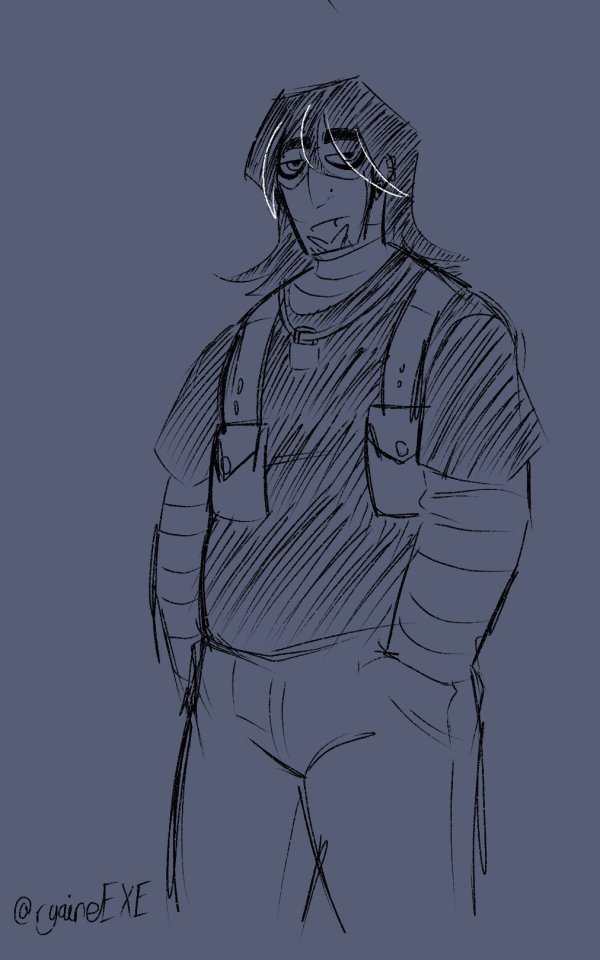
og images⬇️⬇️


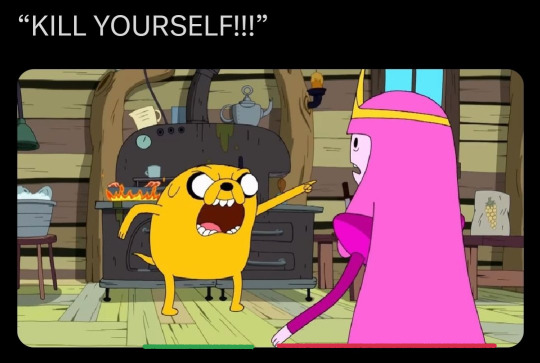
#theres cute doodles and goofy ass drawings and then theres that one doodle of reboot kevin comforting ben#idk man i wanted to draw them being emotional for once considering they're not even in middle school yet#and ive never seen them get any actual comfort#especially when they were kids#so#ben 10#ben 10 classic#ben 10 alien force#ben 10 ultimate alien#ben 10 omniverse#ben 10 reboot#ripjaws#ben 10 ripjaws#ben tennyson#gwen tennyson#heatblast#ben 10 heatblast#big chill#ben 10 big chill#swampfire#feedback#ben 10 feedback#kevin levin#bevin#good GOD thats a lot of tags#lynx posting
275 notes
·
View notes
Text




Monica Vitti in On My Way to the Crusades, I Met a Girl Who... (La cintura di castità)
#monica vitti#actress#italian film#italian#comedy#film#classics#pasquale festa campanile#medieval#middle ages#golden armour#armour#gold armour#gold#crusades#crusade#europe#italy#the chastity belt#decameron#giovanni boccaccio
2K notes
·
View notes
Text

Illustration from the Middle Earth Portfolio by Frank Frazetta (1975)
#frank frazetta#art#illustration#1970s#1970s art#vintage art#vintage illustration#vintage#american art#american artist#american illustrators#j. r. r. tolkien#middle earth#fantasy#fantasy art#classic art
945 notes
·
View notes
Text
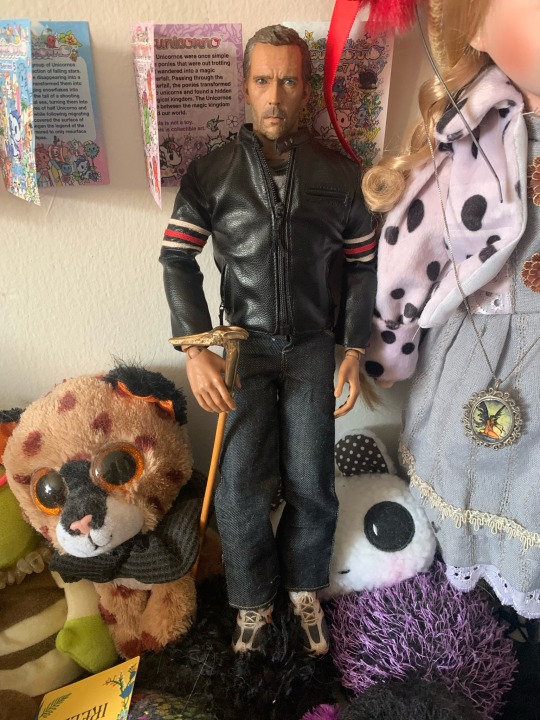
the boy is HOMEEEE ignore old plushies my bookshelf is a mess rn. why does he look so sad

#can you tell i kept my books from middle school because i havent bought new ones in years#books look so good on a shelf until you see dork diaries and classic lit from school .#speaking of i HATE lotf and love a separate peace dearly#i wrote a 1k word essay on why they were gay as fuck but also had awful internalized homophobia in 8th grade#and got 100% so my teacher agreed !#house md#gregory house#hate crimes md#james wilson#hilson#they're on a date btw#shitpost
211 notes
·
View notes
Text

He has turned his mind now to spiders…
Introducing my design for Renfield
#dracula#dracula daily#renfield#rm renfield#re: dracula#little old woman (middle aged man) who swallowed a fly#Paris’s box of classic lit blorbos
483 notes
·
View notes
Text
new enstars characters (nice + 4piece) as tbh/autism creatures ◕_◕ also i color picked them and recolored some pride flags because i can









fuyume -> bigender


ibuki -> nonbinary


esu -> transmasc


raika -> aroace


kanna -> agender
#enstars#i spent way too much time and energy on this#nice arneb thunder#loser name for a loser man#classic rant in the tags let's go#i really hope one of 4piece is genderqueer#favorite character is kanna so far#mr nice guy really went to a middle school chess tournament saw kanna and asked if he wanted to be an idol#esu is just like me fr#gives me so much transmasc energy yk#the big ugly jacket#kind of looks like the sports survivors card#...i'm gonna make the esu tbh and the esu transmasc flag into a pinback button#im ngl i thought 4piece was going to be like a 4chan unit#ensemble stars#long post#enstars fanart#hand crafted sillies#wait no i had another tag#hand-crafted funnies#i think?#hanamura fuyume#taki ibuki#sagiri esu#hojo raika#natsu kanna#4piece#4piece enstars#ensemble stars fanart#i can't see if i tagged that already or not oh well
79 notes
·
View notes
Text




Images of Jerry Habibi, Persian and Iranian-American Actor who portrays Abbas in Sony’s ‘The Persian Version’.
#jerry habibi#the persian version#sony pictures classics#persian#iranian#middle east#swanasource#middle eastern#gold#entertainment#corey myers#sundance film festival#prince of persia#habibi#male beauty#masculine#jock#nose#vintage men#beautiful men
196 notes
·
View notes
Text

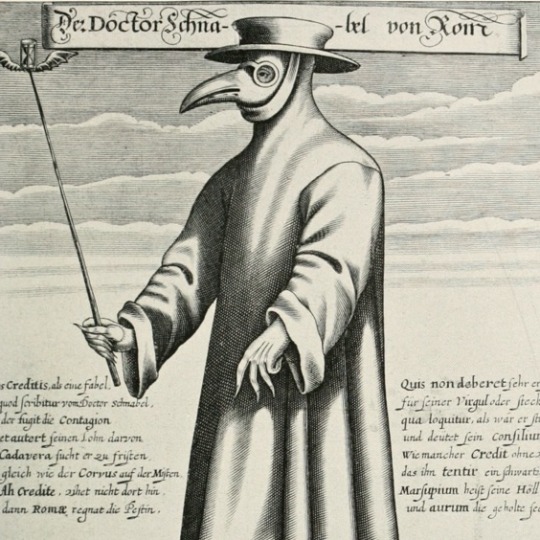
Plague doctor of Marseilles embroidered by me, 2020.
#Clair Blake art#my art#my embroidery#plague doctor#renaissance#middle ages#the dark ages#covid 19#plague mask#Dr Beak of Rome#17th century#dark academia#art#classic academia#artists on tumblr#dark acamedia#embroidery#cross stitch#cross hatching#sketching#craftblr#pandemic#horror#Victorian era#medical art#superstition#steampunk#light academia#clair blake#plaguecore
547 notes
·
View notes
Text

the gender (my gender) is gendering
#doctor who#classic who#victoria waterfield#jamie mccrimmon#& then the doctor is in the middle hopebthis helps
147 notes
·
View notes
Text
this blog is pro ballet flats
#if I see another person calling this classic piece of shoe ugly and too 2006 middle school...#diary
514 notes
·
View notes
Text
“Awk sure I did feel while bad for the poor wee critter asking her to marry him the wee pet he was while civil :(” –my very Northern Irish mother about Seward proposing to Lucy after my gothic-literature-obsessed dad and I peer pressured her into reading Dracula
Honorable mentions were her calling Dracula’s Brides “those three bitches” and calling Seward “the hospital boy”
#Even my art teacher is now saying she has to read it I’ll slowly convince every middle aged white woman in County Tyrone#classic literature#goth lit#gothic lit#gothic literature#dracula#dracula novel#classic lit#dracula art#mina harker#dr seward#dracula daily#jonathan harker#jack seward#bram stoker
512 notes
·
View notes